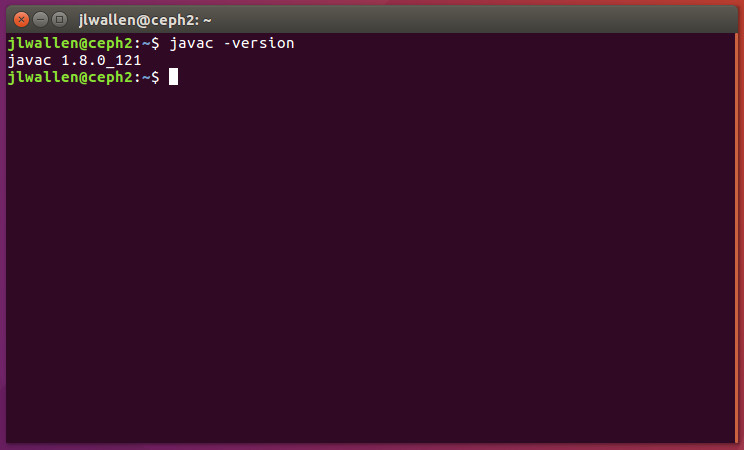
- #APACHE DIRECTORY STUDIO CLI START SERVER DEBIAN INSTALL#
- #APACHE DIRECTORY STUDIO CLI START SERVER DEBIAN UPDATE#
- #APACHE DIRECTORY STUDIO CLI START SERVER DEBIAN WINDOWS#
Restart Apache and apply any changes you have made: sudo systemctl restart httpd Re-enable Apache at boot: sudo systemctl enable httpd Prevent or disable Apache from starting when the system boots: sudo systemctl disable httpd Stop Apache Service: sudo systemctl stop httpd Other commands that you can use to control the Apache service include: These logs can be found in: /var/log/httpd/. Log files record all the activity of the Apache service, including client activity on the websites your system is hosting. The configuration files for these modules should be stored in: /etc/httpd// directory. You can enhance Apache’s functionality by loading additional modules. conf extension and should be stored in the /etc/httpd/conf.d/ directory. If there are any other configuration files, they are included in the main configuration file. They are located at /etc/httpd.Īpache has a main configuration file: /etc/httpd/conf/nf. One of the main ways Apache functions is through configuration files. If you are hosting more than one domain, make sure you create a new directory in /var/file, and replace MyWebsite with another domain name that you’re hosting. You can replace MyWebsite above with the name of your domain.

Once the system finishes, you should be able to open a browser window to and see a default Apache test page. Restart the Apache service to apply your changes by entering: sudo systemctl restart httpd ServerAlias DocumentRoot /var/Next, enter the following command to create a directory for you to store your website files in: sudo mkdir /var/www/MyWebsite/Ĥ. In the editor, enter the following text: NameVirtualHost *:80 This will launch the Vi text editor, and create a new nf file in the /etc/httpd/conf.d directory.Ģ. To create a virtual host configuration file, enter the following into a terminal window: sudo vi /etc/httpd/conf.d/nf Keeping them separate makes troubleshooting easier.ġ. The configuration file is called a vhost, for a virtual host.

Each website needs its own configuration file. Virtual hosts are different websites that you run from the same server. Once these complete successfully, reload the firewall to apply the changes with the command: sudo firewall-cmd ––reload Step 6: Configure Virtual Hosts on CentOS 7 (optional) Modify your firewall to allow connections on these ports using the following commands: sudo firewall-cmd ––permanent ––add-port=80/tcp sudo firewall-cmd ––permanent ––add-port=443/tcpĢ. Normal web traffic uses the http protocol on Port 80, while encrypted web traffic uses the https protocol, on Port 443.ġ. In a standard installation, CentOS 7 is set to prevent traffic to Apache. Step 5: Configure firewalld to Allow Apache Traffic Next, set the Apache service to start when the system boots: sudo systemctl enable httpd Step 4: Verify Apache Serviceĭisplay information about Apache, and verify it’s currently running with: sudo systemctl status httpd Enter the following command in a terminal window: sudo systemctl start httpdĢ.

To activate Apache, start its service first.ġ.
#APACHE DIRECTORY STUDIO CLI START SERVER DEBIAN INSTALL#
The system should download and install the Apache software packages. To install Apache on your CentOS server, use the following command: sudo yum install httpd The system should reach out to the software repositories and refresh the list to the latest versions.
#APACHE DIRECTORY STUDIO CLI START SERVER DEBIAN UPDATE#
In a terminal window, input the command: sudo yum update Installing Apache on CentOS Step 1: Update Software Versions ListĮnsure you are using the latest versions of the software. The yum package manager, installed by default.Access to a command line terminal (menu > application > utilities > terminal).# Register the Microsoft Ubuntu repositoryĭocumentation for mssql-cli is located in the mssql-cli GitHub repository.Īdditional documentation is located in the doc folder. The following example applies to Ubuntu 18.04 (Bionic), more information and examples for other distributions can be found in the Installation Guide. Linux InstallationĪfter registering the Microsoft repository, mssql-cli can be installed and upgraded through package managers on several Linux distributions.
#APACHE DIRECTORY STUDIO CLI START SERVER DEBIAN WINDOWS#
Mssql-cli is installed on Windows and macOS using pip:įor more detailed instructions, please see the Installation Guide. The most common install scenarios are summarized below. Install mssql-cliįor detailed installation instructions, see the Installation Guide. Mssql-cli is an interactive command-line tool for querying SQL Server and runs on Windows, macOS, or Linux.


 0 kommentar(er)
0 kommentar(er)
